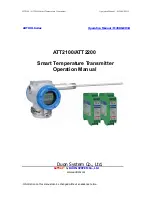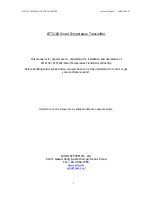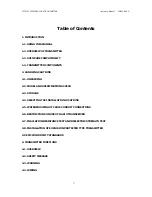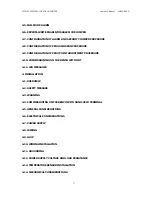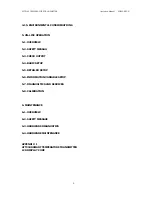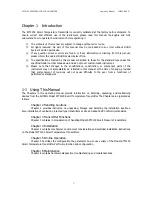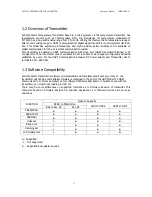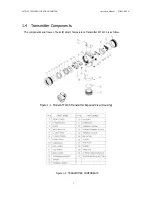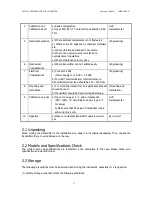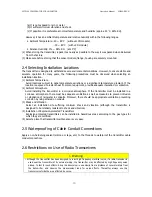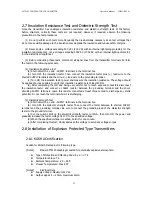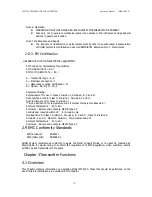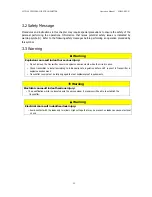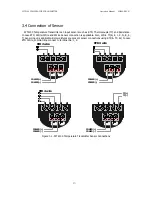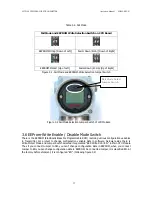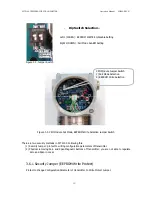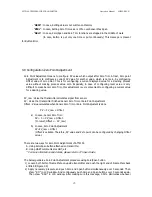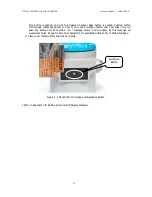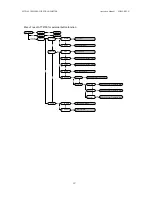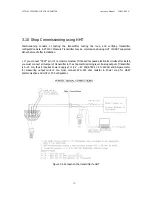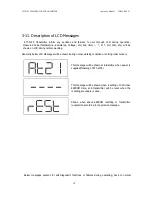
ATT2100 TEMPERATURE TRANSMITTER
Operation Manual M2100-REV-G
10
(a) It is not exposed to rain or water.
(b) It suffers minimum vibration and shock.
(c) If possible, it is preferable at normal temperature and humidity (approx. 25
°
C, 65% RH).
However, it has an ambient temperature and relative humidity within the following ranges.
●
Ambient Temperature: -40 ~ 85
°
C (without LCD module)
-30 ~ 80
°
C (with LCD module)
●
Relative Humidity: 5% ~ 98% RH (at 40
°
C)
(2) When storing the transmitter, repack it as nearly as possible to the way it was packed when delivered
from the factory.
(3) Make sure before storing that the sensor module, flange, housing are securely mounted.
2.4 Selecting Installation Locations
The transmitter is designed to withstand severe environmental conditions. However, to ensure stable and
accurate operation for many years, the following precautions must be observed when selecting an
installation location.
(1) Ambient Temperature
Avoid locations subject to wide temperature variations or a significant temperature gradient. If the
location is exposed to radiant heat from plant equipment, provide adequate insulation or ventilation.
(2) Ambient Atmosphere
Avoid installing the transmitter in a corrosive atmosphere. If the transmitter must be installed in a
corrosive atmosphere, there must be adequate ventilation as well as measures to prevent intrusion
or stagnation of rainwater in conduits. Moreover, there should be appropriate ventilation preventing
corrosion by rain gathered on conduit.
(3) Shock and Vibration
Select an installation site suffering minimum shock and vibration (although the transmitter is
designed to be relatively resistant to shock and vibration)
(4) Installation of Explosion-protected Transmitters
Explosion-protected transmitters can be installed in hazardous areas according to the gas types for
which they are certified.
(5) Select a place that transmitter maintenance is very easy.
2.5 Waterproofing of Cable Conduit Connections
Apply a non-hardening sealant (silicone or tape, etc.) to the threads to waterproof the transmitter cable
conduit connections.
2.6 Restrictions on Use of Radio Transceivers
▲
Warning
◈
Although the transmitter has been designed to resist high frequency electrical noise, if a radio transeiver is
used near the transmitter of its external wiring, the transmitter may be affected by high frequency noise
pickup. To test for such effects, bring the transceiver in use slowly from a distance of several meters from
the transmitter, and observe the measurement loop for noise effects. Thereafter, always use the
transceiver outside the area affected by noise.

